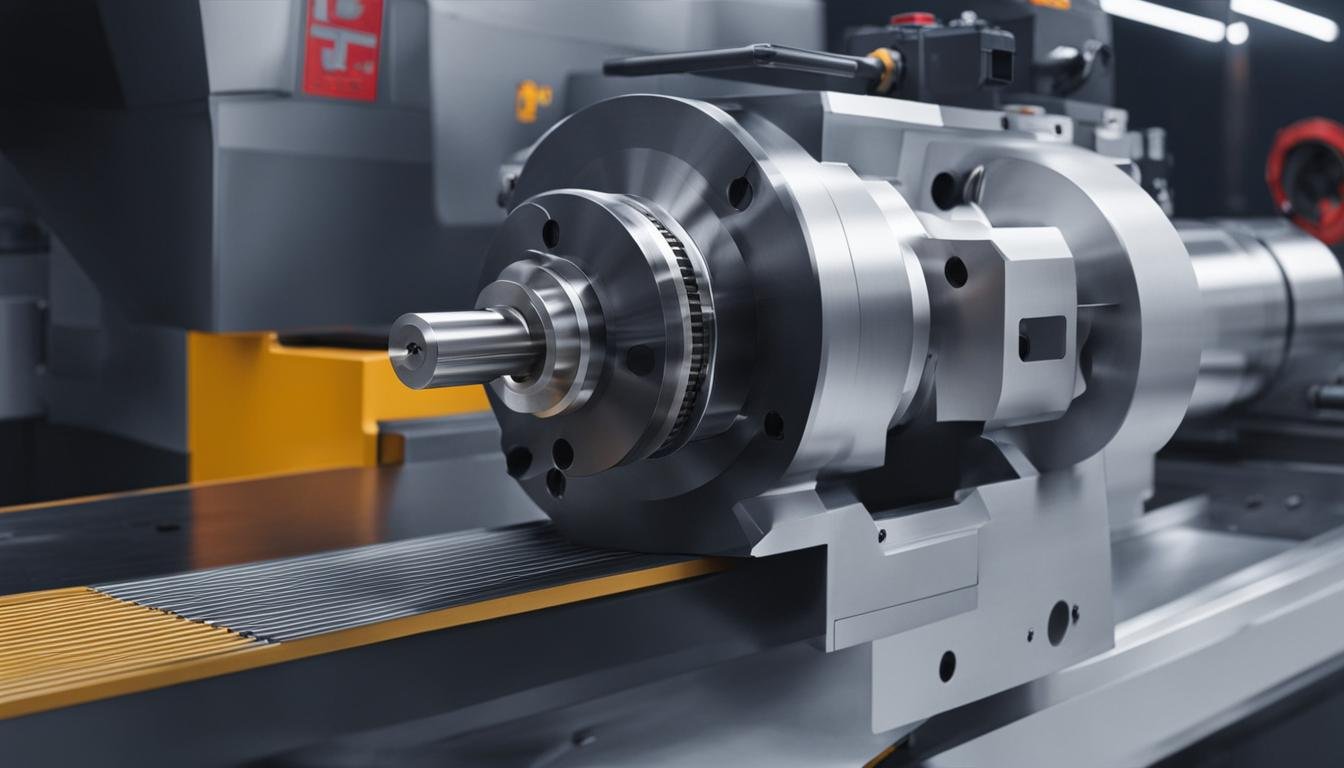CNC lathe machines have revolutionized the manufacturing industry with their precision and efficiency.
Whether you’re a manufacturer or someone interested in the world of manufacturing, understanding the advantages and disadvantages of CNC lathe machines is crucial for making informed decisions and optimizing your processes.
Key Takeaways:
- CNC lathe machines offer high precision and accuracy, making them ideal for industries that require fine tolerances.
- They provide versatility in working with various materials, from plastics to rigid foam, expanding the range of possibilities.
- CNC machines can create simulated models or prototypes, saving time and material costs.
- Constant use with minimal maintenance allows for 24-hour operation and scalability.
- Consider the limitations of CNC lathe machines, such as cost and size restrictions, when making decisions for your manufacturing processes.
Advantages of Using CNC Machinery
When it comes to manufacturing processes, CNC machinery offers a wide range of advantages that can greatly benefit businesses. Let’s explore some of the key advantages of using CNC machinery:
Constant Use With Minimal Maintenance
CNC machines are designed to operate continuously with minimal maintenance requirements. This means that you can keep your production running smoothly 24 hours a day, maximizing your output and efficiency. With minimal downtime for maintenance, you can meet tight deadlines and keep up with increasing demand.
Precision and Accuracy
CNC machinery excels in precision and accuracy, delivering high-quality products that meet tight tolerances. Whether you need to create complex shapes or intricate details, CNC machines can consistently achieve the desired results. This level of precision is especially crucial in industries such as aerospace and defense, where even the smallest deviation can have significant consequences.
Versatility and More Capability
CNC machines are incredibly versatile, offering the capability to work with a wide range of materials, from metals to plastics and more. This versatility allows businesses to expand their product offerings and explore new markets. Additionally, CNC machines can perform various operations, including milling, drilling, cutting, and turning, enabling you to create intricate and complex parts with ease.
High Production and Scalability
CNC machinery enables high production rates due to its automation and efficiency. With CNC machines, you can produce a large volume of parts consistently and quickly, meeting customer demands and reducing lead times. Moreover, CNC machinery offers scalability, allowing businesses to easily scale up production when needed, without compromising quality or precision.
In summary, CNC machinery provides constant use with minimal maintenance, ensuring uninterrupted production. It offers precision, accuracy, versatility, and more capability, allowing businesses to create a wide range of complex parts with ease. Additionally, CNC machinery enables high production rates and scalability, giving businesses the ability to meet demand efficiently. These advantages make CNC machinery a valuable asset for manufacturers in various industries.

Limitations of CNC Milling Machines
CNC milling machines offer numerous advantages in the manufacturing industry, but they also come with some limitations that need to be considered. These limitations can impact the cost, size capabilities, and the potential for human error. By understanding these limitations, manufacturers can make informed decisions when considering CNC milling machines for their production processes.
One of the main limitations of CNC milling machines is the cost involved. Compared to other manufacturing methods, such as manual production or traditional milling machines, CNC machines can be more expensive to purchase and maintain. The initial investment and ongoing maintenance costs need to be carefully evaluated to ensure they align with the production needs and budget of the manufacturer.
Another limitation is the size capabilities of CNC milling machines. While these machines can handle a wide range of part sizes, there are limitations to the dimensions they can accommodate. Larger or oversized parts may require specialized equipment or alternative manufacturing methods. It’s important to consider the size requirements of the parts needed for production before investing in a CNC milling machine.
Human error is also a potential limitation when it comes to CNC milling machines. Despite advancements in automation and computer programming, there is still a human element involved in operating and programming these machines. Mistakes or errors in the programming or operation can lead to faulty parts or production delays. Proper training and oversight are crucial to minimizing human error and maximizing the efficiency of CNC milling machines.
| Limitations | Description |
|---|---|
| Cost | Compared to other manufacturing methods, CNC milling machines can have higher upfront costs and ongoing maintenance expenses. |
| Size limitations | CNC milling machines have limitations on the size of parts they can accommodate, requiring alternative methods for larger or oversized parts. |
| Human error | Despite automation, human error can still occur in programming and operating CNC milling machines, leading to faulty parts or delays. |
Understanding the limitations of CNC milling machines is essential for manufacturers who are considering implementing this technology in their production processes. By carefully evaluating the cost, size capabilities, and potential for human error, manufacturers can make informed decisions that align with their production needs and goals.
Constant Use With Minimal Maintenance
One of the key advantages of CNC machinery is its ability to operate 24 hours a day with minimal maintenance. This constant use allows for continuous production, maximizing efficiency and productivity. With CNC machines, you can keep your manufacturing processes running smoothly without the need for frequent interruptions due to maintenance requirements.
Scalability is another benefit of constant use with minimal maintenance. CNC machines can handle high-volume production demands, making them suitable for industries that require large quantities of parts or products. Whether you have a small-scale operation or a large manufacturing facility, CNC machines can be scaled up or down to meet your production needs.
Furthermore, the integration of Internet of Things (IoT) technology offers additional advantages for constant use and minimal maintenance. By equipping CNC machines with sensors and connectivity, manufacturers can gather real-time data on machine performance, track wear on parts, and automate maintenance processes. This integration improves efficiency, reduces downtime, and ensures optimal machine performance.
| Advantages of Constant Use With Minimal Maintenance | Details |
|---|---|
| 24-Hour Operation | CNC machines can operate continuously, maximizing production output. |
| Scalability | CNC machines can handle high-volume production demands and be adjusted to suit different manufacturing scales. |
| Internet of Things (IoT) Integration | CNC machines can be equipped with sensors and connectivity for real-time data monitoring, predictive maintenance, and optimal performance. |
By leveraging the advantages of constant use with minimal maintenance, manufacturers can achieve higher production output, improved operational efficiency, and increased profitability. The ability to operate CNC machines continuously and integrate IoT technology provides a competitive edge in the manufacturing industry.
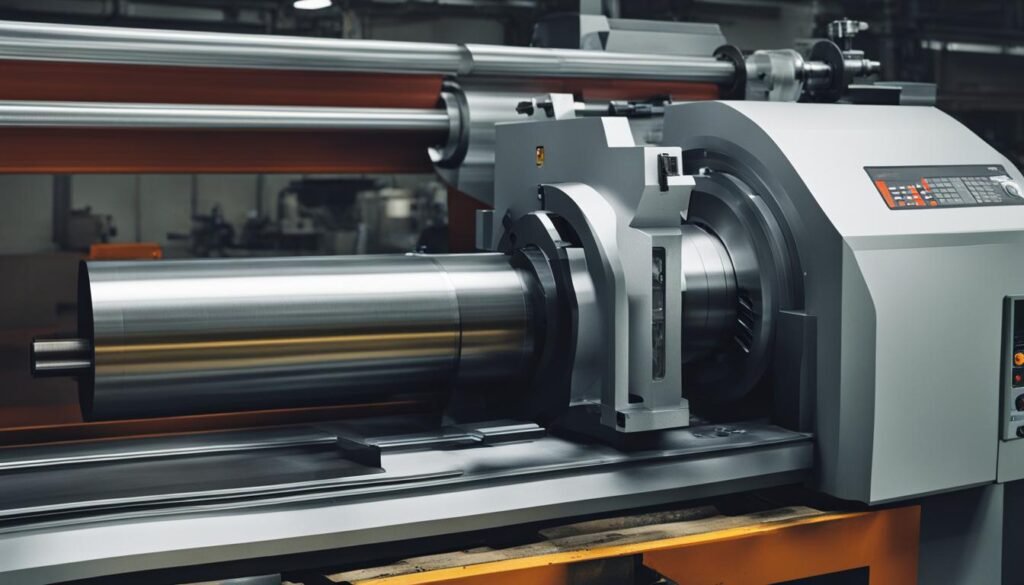
Quote:
“With CNC machines operating 24/7 and minimal maintenance requirements, manufacturers can maximize their production capacity and meet customer demands efficiently.”
High Precision Machining in the Aerospace and Defense Industries
When it comes to the aerospace and defense industries, precision is of paramount importance. The intricate components and critical parts used in these sectors require high precision machining techniques to ensure optimal performance and safety. CNC machines have emerged as the go-to solution for achieving the level of precision demanded by these industries.
With CNC machines, manufacturers can achieve tight tolerances and produce complex parts with exceptional accuracy. These machines utilize advanced computer programming and automation to execute precise movements, resulting in consistent and reliable results. From engine components to aircraft structures, CNC machining plays a crucial role in delivering the precision required for the aerospace and defense sectors.
Whether it’s producing intricate gears, turbine blades, or critical safety components, CNC machines excel in delivering the necessary precision. The ability to consistently manufacture components with tight tolerances ensures that all parts fit together perfectly, contributing to the overall efficiency and reliability of the final product. CNC machining allows manufacturers in the aerospace and defense industries to meet the strict design requirements and quality standards that are essential for success.
| Applications | Precision Requirements |
|---|---|
| Aircraft Engine Components | Ultra-high precision to ensure optimal performance and fuel efficiency. |
| Defense System Parts | High precision to ensure accurate functioning and seamless integration. |
| Aerospace Structures | Tight tolerances to guarantee structural integrity and aerodynamic efficiency. |
“Accurate machining is the backbone of the aerospace and defense industries. Every component must meet stringent quality standards to ensure safety and performance. CNC machines provide the precise manufacturing capabilities needed for these critical sectors.” – Aerospace Manufacturing Expert
Superior Precision for Complex Designs
One of the key advantages of CNC machines in the aerospace and defense industries is their ability to handle complex designs with utmost precision. These machines can execute intricate tool paths and follow complex geometries with ease, resulting in accurate reproduction of even the most complex components. Whether it’s creating intricate features or producing parts with tight tolerances, CNC machining offers the precision required for the challenging designs encountered in these industries.
The aerospace and defense industries demand the highest level of precision, and CNC machines deliver on that requirement. From engine components to aircraft structures, these machines play a pivotal role in ensuring the safety, reliability, and performance of critical aerospace and defense systems.
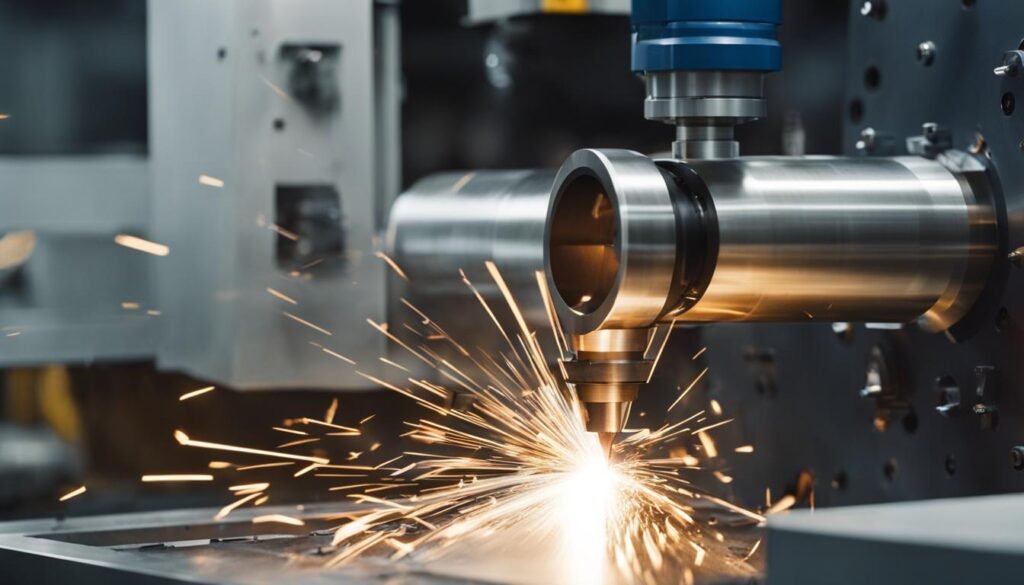
Accuracy
When it comes to CNC machining, accuracy is a crucial factor that manufacturers strive to achieve. CNC machines offer improved accuracy compared to manual production methods, but it’s important to note that operator control plays a significant role in maintaining this accuracy. Operators must adhere to strict design guidelines and ensure proper tool calibration to achieve precise results.
Strict design guidelines are essential for CNC machining to ensure that the final product meets the desired specifications. The CAD (Computer-Aided Design) files used in CNC programming provide a blueprint for the machine to follow. By following these guidelines, operators can maintain accuracy and achieve the desired outcomes.
“One of the key advantages of CNC machining is repeatability and improved accuracy compared to handmade components.” – CNC Machining Expert
In addition to design guidelines, operator control is crucial for maintaining accuracy in CNC machining processes. Operators are responsible for setting up the machine, choosing the appropriate cutting tools, and monitoring the machining process. They must also recognize the need for regular maintenance to ensure the machine continues to operate accurately.
Operator Control in CNC Machining
Operator control involves various aspects, including:
- Tool calibration: Operators must regularly calibrate cutting tools to ensure precise and accurate cuts.
- Operating environment: Maintaining a stable temperature and humidity in the machining environment is essential for accuracy.
- Maintenance: Regular maintenance, such as cleaning and lubricating the machine, is necessary to prevent wear and maintain accuracy.
By emphasizing operator control and adhering to strict design guidelines, manufacturers can optimize accuracy in CNC machining processes and produce high-quality parts.
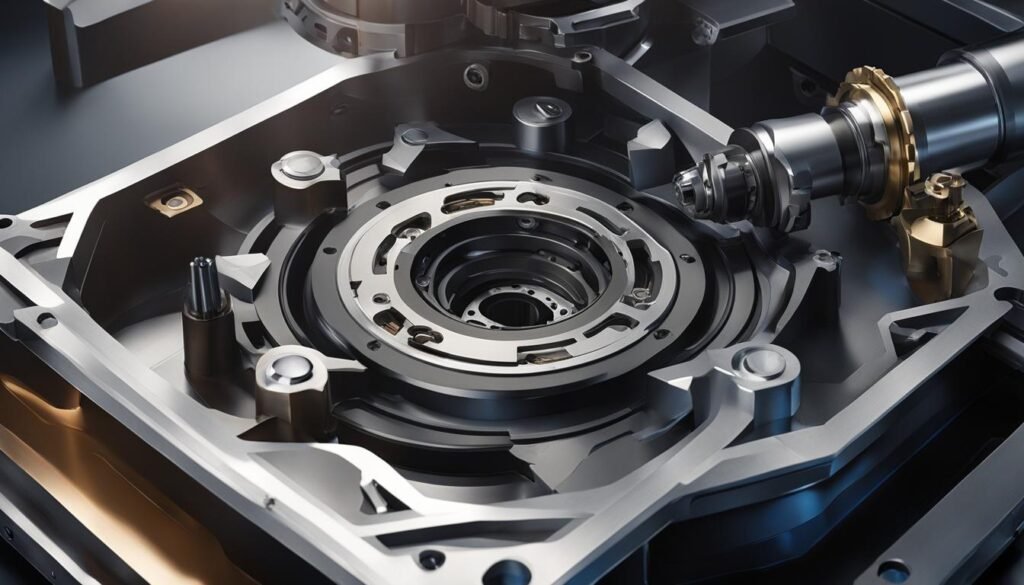
Versatility
When it comes to choosing a manufacturing method, versatility is a key factor to consider. CNC machining offers unparalleled versatility in working with various materials, giving manufacturers the freedom to choose the best option for their specific needs. From plastics to phenolic materials, rigid foam to carving foam, CNC machines can handle a wide range of materials with ease.
Plastics are one of the most commonly used materials in CNC machining. With their various properties and characteristics, plastics are suitable for a wide range of applications. Whether you need parts with high heat tolerance, stress resistance, hardness, fastening, or design tolerance, CNC machining can deliver the desired results.
Phenolic materials, known for their excellent electrical properties and resistance to heat and chemicals, are another popular choice for CNC machining. These materials are commonly used in electrical insulation, automotive components, and other industries where durability and performance are crucial.
When it comes to foam, CNC machines excel at working with both rigid foam and carving foam. Rigid foam is commonly used in packaging, insulation, and construction, while carving foam is ideal for creating prototypes and models. With CNC machining, you can bring your foam-based designs to life with precision and accuracy.
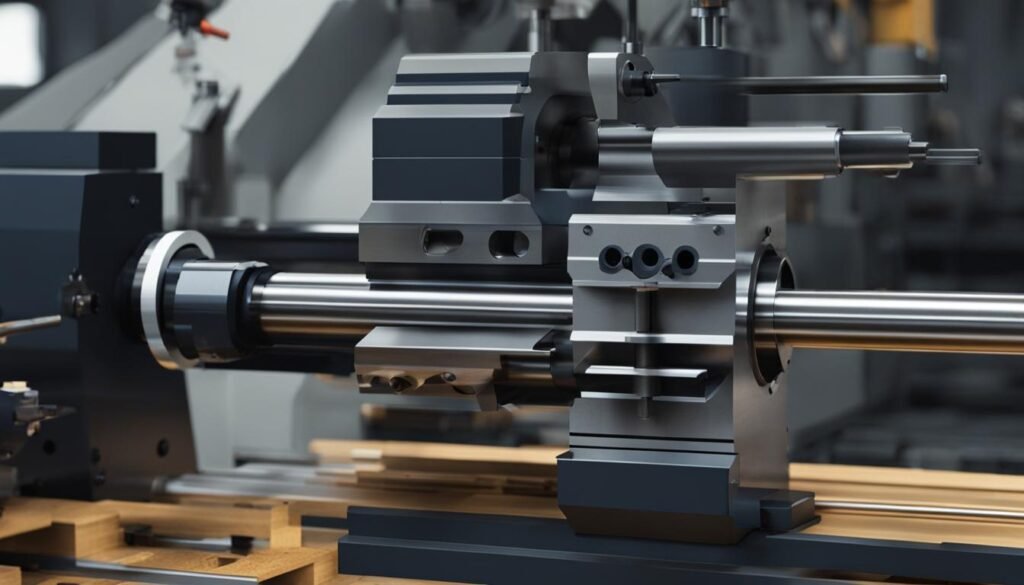
Table: Materials Commonly Used in CNC Machining
| Material | Properties | Applications |
|---|---|---|
| Plastics | Versatile, customizable, heat tolerance, stress resistance | Automotive, electronics, consumer goods |
| Phenolic Materials | Electrical properties, heat and chemical resistance | Electrical insulation, automotive components |
| Rigid Foam | Lightweight, insulating, impact-resistant | Packaging, insulation, construction |
| Carving Foam | Easy to shape, smooth finish, ideal for prototypes | Prototyping, modeling |
Simulated Models or Prototypes
CNC machines have revolutionized the manufacturing industry by offering the ability to create simulated models or prototypes. With a CNC machine, you can visualize a three-dimensional representation of your part before committing to production. This allows for time and material savings, as physical prototypes are not always necessary. By utilizing the advanced software integration capabilities of CNC machines, you can easily create a virtual prototype and make any necessary adjustments to your design.
The ability to simulate models or prototypes offers several advantages. Firstly, it provides a clearer visualization of the final product, allowing you to make more informed design decisions. It also allows you to identify any potential flaws or issues before moving forward with production, saving both time and money. Furthermore, it enables you to communicate your design ideas effectively with stakeholders, ensuring everyone is on the same page and minimizing misunderstandings.
Simulated models or prototypes produced by CNC machines are highly accurate and detailed, providing a realistic representation of the final product. They can be used for a variety of purposes, such as showcasing your design to potential customers or investors, testing the functionality of the part, and identifying any aesthetic improvements that may be needed. Overall, simulated models or prototypes offer a valuable tool for manufacturers to streamline their design and development processes.
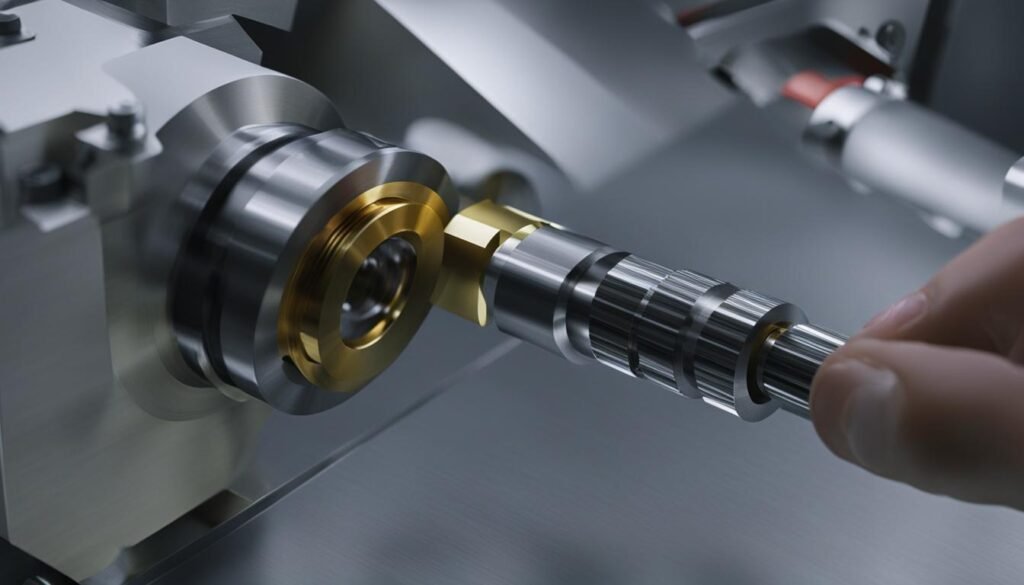
Conclusion
In conclusion, CNC lathe machines offer numerous advantages in precision, accuracy, versatility, production efficiency, and design retention. With CNC lathe machines, you have the ability to create custom parts with high precision and consistency, ensuring that your products meet the highest quality standards. The use of CNC lathe machines can significantly improve your manufacturing processes, allowing for faster production, reduced errors, and increased productivity.
However, it’s important to consider the limitations of CNC lathe machines as well. Factors such as cost and size restrictions need to be taken into account when making decisions about incorporating CNC lathe machines into your manufacturing setup. By carefully evaluating the advantages and disadvantages of CNC lathe machines, you can make well-informed decisions that align with your specific manufacturing needs and goals.
By leveraging the advantages of CNC lathe machines and mitigating the associated limitations, you can optimize your manufacturing processes and stay competitive in the industry. Making informed decisions about incorporating CNC lathe machines into your manufacturing setup is essential for staying ahead of the curve and achieving success in today’s fast-paced and demanding market.
FAQ
What are the advantages of using CNC machinery?
CNC machinery offers benefits such as constant use with minimal maintenance, precision in producing fine tolerances, accuracy in matching design specifications, versatility in working with various materials, the ability to create simulated models or prototypes, increased capability with advanced software integration, high production and scalability, consistent production of uniform products, and design retention for future production.
What are the limitations of CNC milling machines?
The limitations of CNC milling machines include higher cost compared to other methods, size limitations for certain parts, and the potential for human error in programming and operation.
How does constant use with minimal maintenance work in CNC machinery?
CNC machinery can operate 24 hours a day with minimal maintenance, allowing for continuous production and scalability. With the future integration of the Internet of Things (IoT), CNC machines can have sensors that track the wear on parts and automate maintenance, improving efficiency and reducing downtime.
How does CNC machinery ensure precision?
CNC machines offer high precision in producing fine tolerances, making them suitable for industries such as aerospace and defense that require precise and accurate parts. The level of precision can vary among CNC machines, so it’s important to consider the capabilities of the machine shop.
What role does accuracy play in CNC machining?
CNC machining reduces accuracy problems compared to manual production, but the operator still plays a pivotal role. Operators control tool calibration, operating environment, and recognize the need for maintenance to maintain accuracy. CNC machining enables repeatability and improved accuracy compared to handmade components.
How versatile is CNC machinery in working with different materials?
CNC machines offer versatility in working with various materials, such as plastics, phenolic materials, rigid foam, and carving foam. The choice of material depends on factors like heat tolerance, stress resistance, hardness, fastening, and design tolerance.
Can CNC machines create simulated models or prototypes?
Yes, CNC machines can create simulated models or prototypes, providing a three-dimensional visualization of the part before production. This allows for time and material savings, as physical prototypes are not always necessary. CNC machining offers the option to create a single prototype or view the part directly in the computer program.
